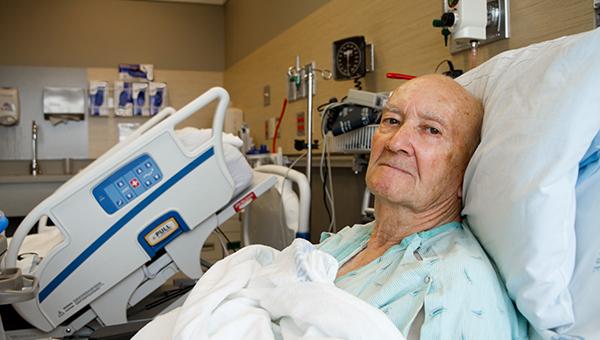Opioids Not Always Needed After Cardiac Surgery
Efforts to reduce blanket opioid prescribing are paying off: the next step is to understand who really needs a script for pain.

Certain patients don’t need to be discharged from the hospital with an opioid prescription following cardiac surgery, and prescribers can look to specific in-hospital factors to guide their medication choices, according to new data.
Despite the headlines crowded with COVID-19 coverage, the opioid crisis remains at the forefront of healthcare decision-making, with surgeons especially cognizant of the long-term effects of their prescriptions.
“Many [cardiac surgery] patients expect that they’ll be in really significant pain and that they’ll need opioid pain medicine after surgery,” lead author Catherine M. Wagner, MD (University of Michigan, Ann Arbor), told TCTMD. But this isn’t always the case. “Within cardiac surgery, we’ve started to focus on decreasing the amount of opioids, but now I’m thinking that the next phase will be really identifying which patients need opioids as opposed to just kind of giving everyone a prescription.”
Wagner was careful to acknowledge that some patients do need opioids following surgery to manage pain, but they shouldn’t be the default. “Certainly, our research so far is just the select patients,” she said. “Really, we want to emphasize that how much opioids patients are taking during their hospitalization [can] guide prescribing at discharge, and I think maybe the best metric of that is what they’re using on the day before discharge.”
‘Great Validation’
For the study, published online last week in the Annals of Thoracic Surgery, Wagner and colleagues included 1,924 opioid-naïve patients (mean age 64 years; 25% women) who underwent CABG or valve surgery at 10 centers in Michigan between January and December 2019. Overall, 28% were discharged without an opioid prescription.
We used to prescribe 100 pills of oxycodone and really I think it’s because we didn't know. Catherine M. Wagner
Multivariate analysis showed that older age (OR per 10 years 1.24; 95% CI 1.08-1.43), longer length of stay (OR per day 1.11; 95% CI 1.05-1.18), and undergoing surgery within the final 3 months of the study time period (OR 1.89; 95% CI 1.29-2.79) were independent predictors of no opioid prescription on discharge. On the other hand, independent predictors of a patient going home with an opioid prescription were depression, non-Black and nonwhite race, and taking more opioid pills on the day before discharge.
Also, of the 547 patients who did not receive opioids at discharge, only 1.8% received a subsequent prescription before their 30-day follow-up appointment.
Commenting on the study for TCTMD, Mara Antonoff, MD (University of Texas MD Anderson Cancer Center, Houston), said the findings are a “great validation of what many of us suspected.” Additionally, she said in an email, “we cannot reduce the risk of postsurgical opioid use without understanding the prevalence as well as which patients are at risk for needing prolonged opioids.”
Wagner, a third-year cardiothoracic surgery resident, said she has noticed a shift in opioid prescribing since she graduated medical school. “There’s been a number of policies put in place to limit postoperative prescribing and also to increase awareness about risks of postoperative pain prescriptions,” she said, citing, for example, rules within her institution that dictate how many opioid pills she can prescribe for patients who want them.
“Specifically, within cardiac surgery, there’s certainly increased awareness,” Wagner said. “We used to prescribe 100 pills of oxycodone and really I think it’s because we didn’t know. We wanted to make sure patients’ pain was well controlled and we didn’t know what number of pills that would be to make sure patients were comfortable at home. So now with increased research in the average number of opioid pills that would be necessary for pain control combined with the increased risks of opioids, I think we’re starting to really find that sweet spot.”
While the results of the study seem to be in line with prior research—for example, depression is a known factor contributing to a greater use of opioids after surgery—she was pleased to see patients who had an operation in the final quarter of 2019 were prescribed fewer opioids because that means the quality initiatives that were enacted that year in her state were working.
“Of course, every situation is different, and it’s not necessarily always one size fits all, but it’s a really great starting point,” Wagner said. “Many patients don’t even want prescriptions anymore. So, I think we’re really headed in the right direction.”
Notably, the data set did not capture any features of the prescriber, but “that would be pretty interesting to see” in the future, according to Wagner. Although, she said, with general surgery shifting to a more-standardized method of prescribing—“if you have X procedure you tend to get X opioids”—and as cardiac surgery moves to this paradigm, she hopes that prescriber-level variation will decrease.
Antonoff said going forward she would like to see greater availability of “other alternative medications which could be used in place of opioids for patients with chronic pain or severe postoperative pain.”
Ultimately, she added, “it’s important for surgeons to recognize that acute pain management ends after about 4 to 6 weeks after surgery, and beyond that point, chronic pain management plans and teams need to be involved. As surgeons, our involvement and expertise is important in the early postoperative period, but beyond that, chronic pain expertise is incredibly useful.”
Yael L. Maxwell is Senior Medical Journalist for TCTMD and Section Editor of TCTMD's Fellows Forum. She served as the inaugural…
Read Full BioSources
Wagner CM, Clark MJ, Theurer PF, et al. Predictors of discharge home without opioids after cardiac surgery: a multicenter analysis. Ann Thorac Surg. 2021;Epub ahead of print.
Disclosures
- Wagner and Antonoff report no relevant conflicts of interest.





Comments